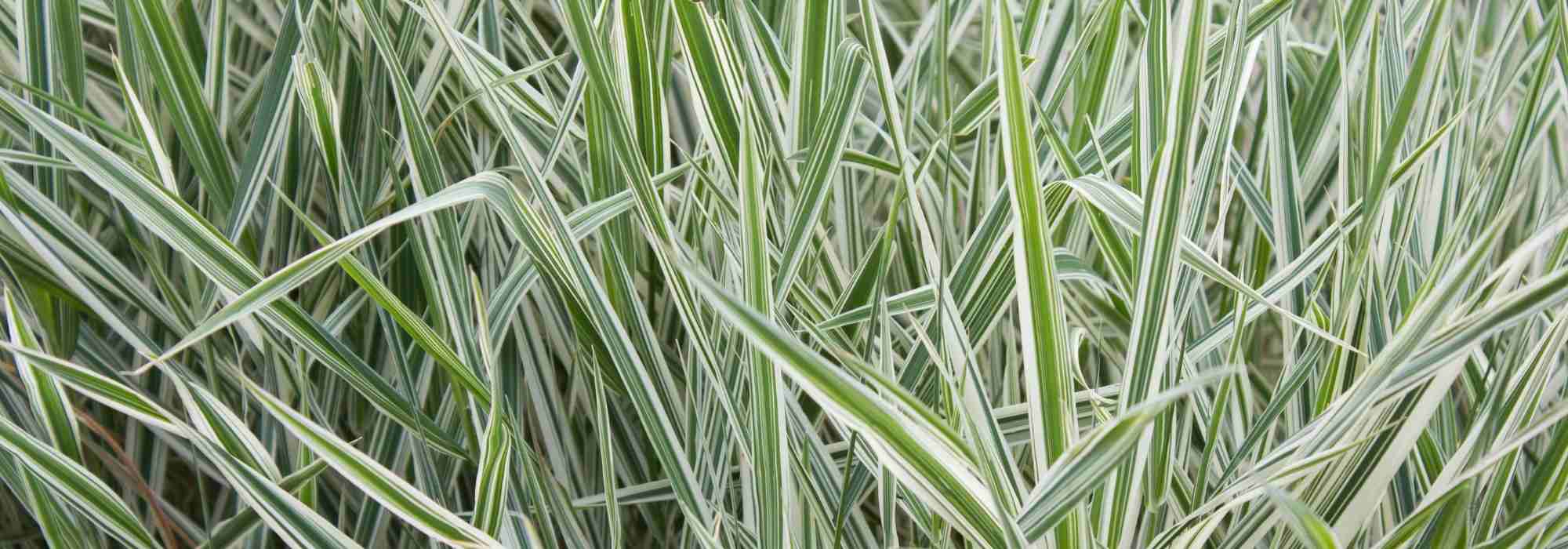
Phalaris - Reed canary grass: growing and care
Contents
Phalaris in a nutshell
- Phalaris arundinacea is a perennial grass easy to grow
- Very hardy, reed canary grass tolerates all soils
- The reed canary grass prefers cool to moist soils, but withstands drought
- Phalaris can be grown in borders, in groups, or to stabilise a slope or banks
- This grass is an excellent groundcover and spreads quickly thanks to its rootstock
The word from our expert
Phalaris arundinacea is more commonly known as reed canary grass, but it also goes by many other vernacular names such as False Canary Grass or Baldingère.
This plant from the Poaceae family is a vigorous perennial grass with running rhizomes. This remarkable groundcover grass spreads quickly to form a beautiful and effective carpet. However, be careful not to leave it unattended, as it can become invasive if conditions are favourable, especially in the case of the typical species. It will be necessary to control its growth, particularly in moist soil.
Its ornamental appeal is undeniable, especially for the varieties Phalaris arundinacea ‘Picta’ with cream-margined leaves, which are very bright in partial shade, or ‘Pure Gold’, with compact golden culms. Phalaris is a perennial grass that quickly adds light, volume, and verticality to borders of perennials or bushes, under large trees, or in groups among other grasses. Reed canary grass thrives in many situations in a natural or slightly wild garden. And it can even be grown in pots.
Reed canary grass also allows for the stabilization of slopes or banks along a river or natural pond, thanks to its rhizomes. Phalaris arundinacea is also an outstanding purifying plant, widely used for the creation of lagoons.
Phalaris is truly low-maintenance in terms of soil and is also very hardy (withstanding temperatures down to -30 °C). This plant also has an excellent (and surprising when you know its ecology!) tolerance to summer drought. It does not suffer in heavy, clayey soils and is unconcerned about potential competition from the roots of trees and shrubs. In short, it is a truly versatile perennial groundcover!
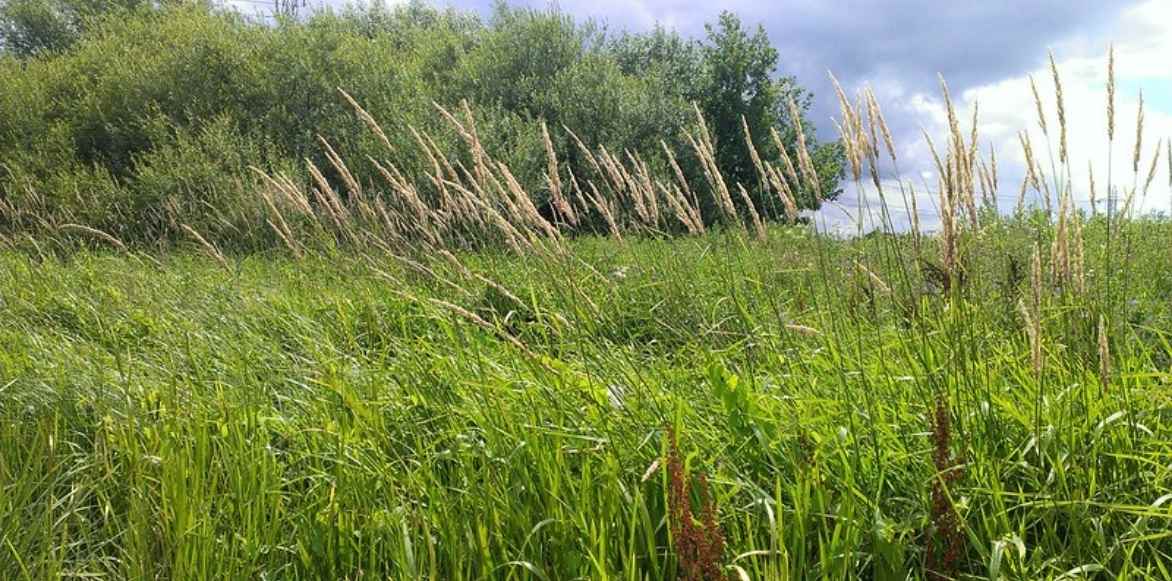
Phalaris arundinacea (© Bat)
Description and botany
Botanical data
- Latin name Phalaris arundinacea
- Family Poaceae
- Common name reed canary grass, gardener's garters
- Flowering May to August
- Height up to 120 cm
- Exposure sun, partial shade
- Soil type Clayey and moist
- Hardiness -15°C
Phalaris are plants from the Poaceae family, previously known as grasses. The genus Phalaris includes about twenty species found on all continents except Antarctica, in various dry and wet environments. Only Phalaris arundinacea is truly cultivated in our gardens. This species is native to Canada and has naturalised throughout Europe and the northern United States, where it can grow up to 1,500 m in altitude. Phalaris arundinacea is indeed a very hardy plant, tolerating temperatures down to -30°C.
Phalaris arundinacea is a perennial grass, growing in clumps and featuring elongated, black, scaly rhizomes. During its growth, the plant reveals firm, upright culms (stems) that can reach heights of up to 200 cm for the typical species. These “stems” are adorned with alternate, sheathing leaves. These ribbon-like leaves are green for the typical species but can take on other hues depending on the varieties. The deciduous foliage turns straw to light beige in autumn, remains decorative in winter, and is replaced by new shoots in spring. Phalaris quickly forms a dense clump with medium green foliage for the typical species, striated with green and white for the ‘Picta’ variety, golden foliage for ‘Pure Gold’, or purple at the panicles and bases of the stems with cream-striped foliage in the case of ‘Picta Feesey’.
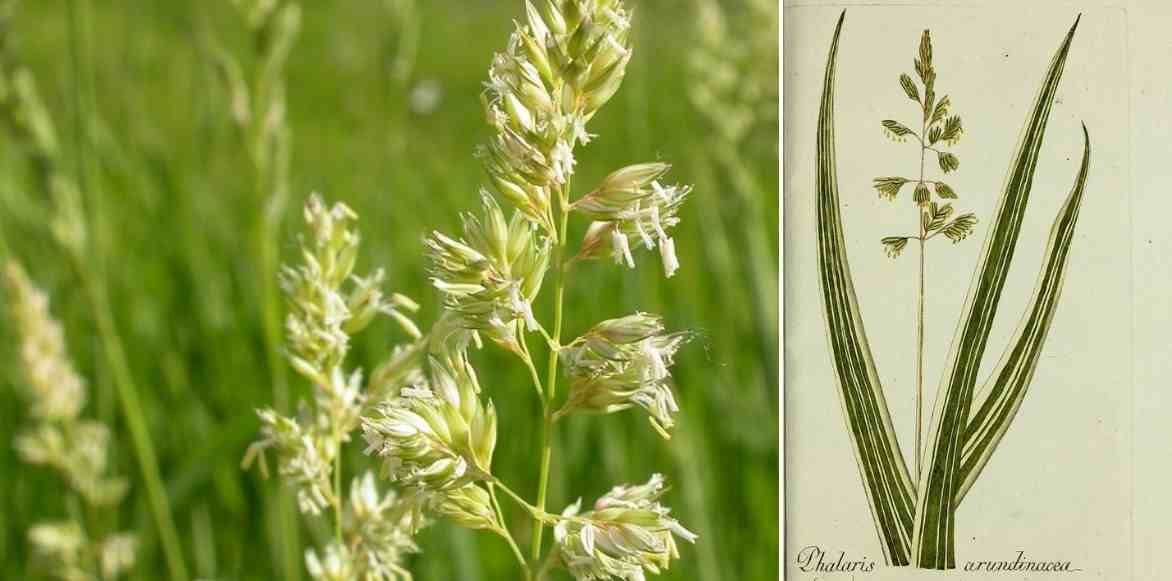 Phalaris arundinacea spikelet (© Matt Lavin) and botanical plate
Phalaris arundinacea spikelet (© Matt Lavin) and botanical plate
From late May to July, this grass produces terminal panicles, fine and compact, less than 20 cm long, composed of pale green spikelets sometimes tinged with purple, which yellow over the summer.
The typical species can quickly become invasive with its two-metre height and unlimited spread. Fortunately, cultivated varieties of Phalaris arundinacea such as ‘Picta’ or ‘Pure Gold’ are more compact and much less invasive.
Phalaris can be used to stabilise slopes, as well as the edges of waterways or ponds. They can also be grown within a natural swimming pool lagoon due to their filtering and oxygenating properties.
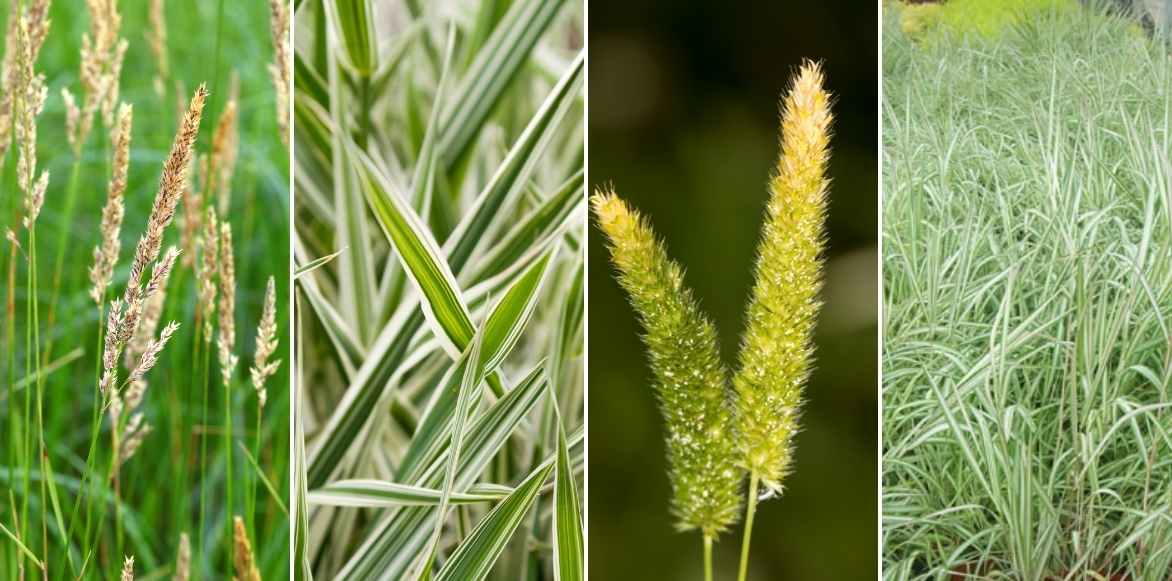 Phalaris arundinacea, Phalaris arundinacea ‘Picta’, spike of Phalaris paradoxa, Phalaris ‘Picta Feesey’ (© L Enking)
Phalaris arundinacea, Phalaris arundinacea ‘Picta’, spike of Phalaris paradoxa, Phalaris ‘Picta Feesey’ (© L Enking)
“`
Read also
Grasses: which variety to choose?Our favourite varieties
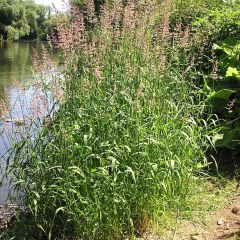
Phalaris arundinaceae
- Flowering time June to August
- Height at maturity 1,20 m
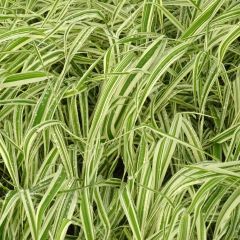
Phalaris arundinacea Picta
- Flowering time July to September
- Height at maturity 60 cm
Discover other Phalaris
View all →Available in 1 sizes
Available in 2 sizes
Available in 1 sizes
Planting Phalaris
Where to plant?
Phalaris thrives in full sun or partial shade. However, for the ‘Picta’ variety, be cautious as the variegation of the foliage tends to lose its intensity in overly shaded conditions.
Phalaris tolerates any type of soil: acidic, neutral, or calcareous; dry or wet. Ideally, it should be planted at the edge of a water feature or even directly in the water at a depth not exceeding 20 cm. A soil rich in humus, even heavy and remaining cool to moist all year round, allows this grass to grow vigorously and perform at its best in no time.
The reed canary grass, especially the variegated or coloured varieties, can be incorporated into perennial or bush borders. Phalaris is perfect for greening an area under the canopy of large trees, provided the shade is not too dense. This grass helps to stabilise slopes and the banks of ponds and streams. The False Reed Canary Grass can also be used in large isolated clumps or in groups with other grasses.
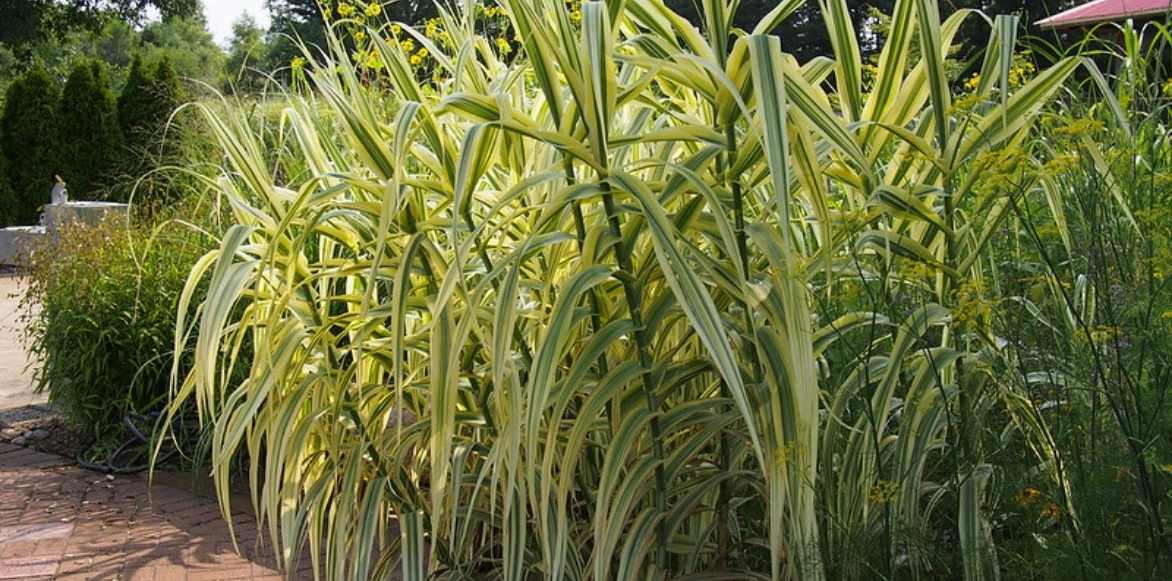
Phalaris arundinacea ‘Strawberries and Cream’ (© FD Richards)
When to plant Phalaris?
Although autumn and spring are the best planting times, Phalaris can be planted in pots or young plants all year round, thanks to its great vigour and rapid recovery. Just avoid extreme heat and frost periods.
How to plant the reed canary grass?
- In borders: make a hole twice as wide and twice as deep as the root ball. Loosen the soil at the bottom of the hole. Place the root ball at the bottom of the hole, bring the soil around it, and then lightly firm the soil around the base. Water each plant thoroughly with a good watering can. You can plant with the pot in the ground or place a rhizome barrier around the plants to contain them.
- At the water’s edge: you can plant phalaris on the bank, but also “with its feet in the water” at a maximum depth of 20 cm. In this case, submerge the plant in its container or in a basket-type container for aquatic plants;
- In pots: use a large pot (10 L) with drainage holes and a substrate that retains water well, such as a special shrub compost. Do not grow the standard species in a pot as it becomes too large.
Just 3 young plants for 1 m² will already create a visually attractive effect in the first year. Phalaris can spread quickly due to its rhizomatous roots. This is perfect if you want a vigorous groundcover, but to contain the plant in a border, consider a rhizome barrier, or prefer pot cultivation.
Read also
Planting grassesMaintenance, pruning and care
Amendments and fertiliser additions
Phalaris prefers fertile soils, but it tolerates poor soils perfectly well. Therefore, it is unnecessary to add fertiliser or amendments. A simple application of compost at its base after the annual pruning is perfectly suitable.
Watering
Care should be taken to keep the soil consistently moist during the year of planting. Afterwards, once well established, phalaris can even withstand long periods of drought.
Pruning
Every year, at the end of winter in March, the foliage should be cut back to ground level. Do not do this too late, or you risk cutting the young shoots of the year. For certain variegated varieties like ‘Picta’, you can cut back a second time at the end of spring to encourage the plant to produce entirely new shoots.
Possible diseases
The reed canary grass is highly resistant to diseases and parasitic pests. This grass can be occasionally affected by rust, a fungal disease that spreads in warm and humid weather. When phalaris is affected, discoloured spots appear on the upper side of the leaves, along with orange or brown pustules (hence the name rust) on the underside. Rust weakens the plant, leading to slower growth. To combat rust, it is advisable to remove the affected parts.
→ Learn more in our advice sheet: Diseases and pests of ornamental grasses.
Multiplication
The reed canary grass spreads through its rootstock, quickly forming an excellent groundcover. To multiply the plant, you can divide the larger clumps of phalaris by cutting pieces with a spade. You should then quickly replant these small fragments in suitable locations. This operation can be carried out from May to July or in early autumn (October).
It is worth noting that the type species, Phalaris arundinacea, self-seeds in the garden if conditions are favourable.
Association
By the banks of a natural pool
Phalaris arundinacea will thrive at the water’s edge, even slightly submerged. To maintain the very natural appearance of this plant, let’s opt for native bank plants or those with a very “Nature” look! We will choose a Marsh Marigold ‘Polypetala’ with its golden-yellow spring flowering, but especially its very rounded foliage providing a remarkable contrast with the upright culms of the Ribbon Grass. Let’s not let the Reed Warblers provide the only verticality in the arrangement! A few metres from their clumps, we will plant another imposing perennial that thrives in moist soils: a Meadowsweet, Filipendula rubra ‘Venusta’, which will add volume and delightful feathery blooms of a beautiful bright pink. To contrast with the foliage of the Meadowsweet, while also echoing the ribbon-like leaves of the Phalaris and the yellow flowers of the Marsh Marigold, we can try some sweet flags or Japanese rushes. A few clumps of Acorus gramineus ‘Ogon’ with their very bright semi-evergreen foliage will highlight the beauty of the other perennials. And how about a little thistle? The Cirsium rivulare ‘Atropurpureum’ with its magenta heads will provide little colourful finishing touches to complete the picture.
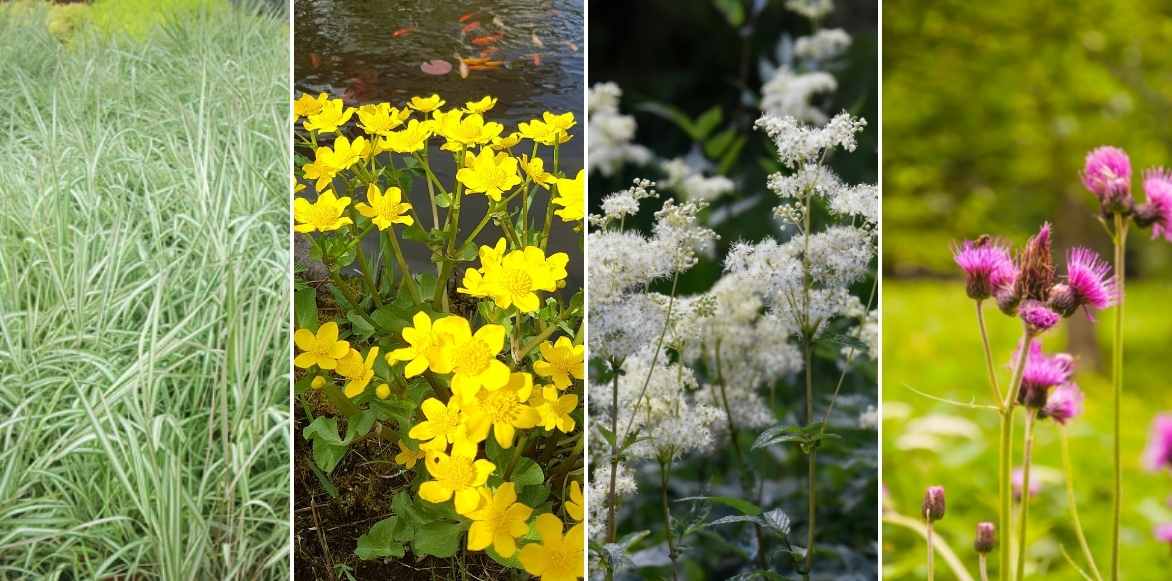
Phalaris alongside Caltha palustris, Filipendula, and Cirsiums rivulare
Under the canopy of large trees
This time, we need to choose a very bright phalaris! A few clumps of Phalaris arundinacea ‘Picta’ with cream-white margined leaves on a green background will form a vigorous and effective groundcover. To accompany this groundcover, several points must be kept in mind: partial shade, relatively dry soil, root competition with the tree AND with the phalaris. Therefore, we need perennials that can hold their own and thrive in these conditions. A beautiful Hungarian Bear’s Breeches will meet these conditions. Likewise, some small sedges with variegated foliage: Carex morrowii ‘Aureovariegata’. Another good vigorous groundcover, but in a completely different style from the Phalaris, to provide a contrast in form and soften the rigid aspect of the phalaris: the large-flowered comfrey or Symphytum grandiflorum ‘Hidcote Blue’. Here and there, a few Corsican Hellebores scattered about will provide lovely evergreen foliage as well as very early season blooms.
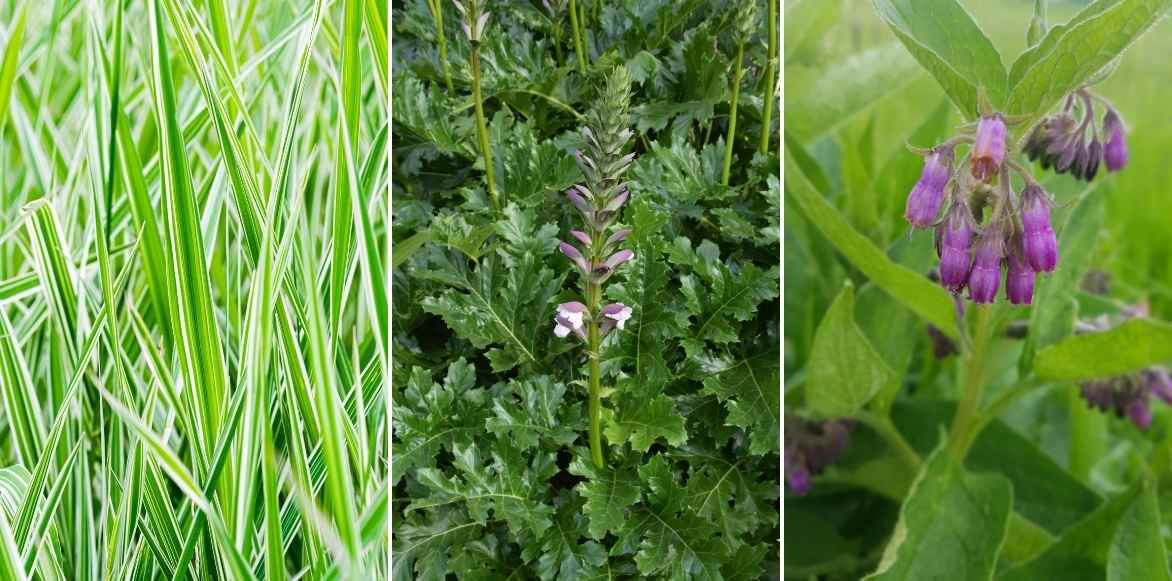 Phalaris alongside Bear’s Breeches and comfrey
Phalaris alongside Bear’s Breeches and comfrey
→ Discover more association ideas with Phalaris in our article!
Anecdotes and remarks
- Some species of Phalaris are toxic to livestock as they contain gramine, an alkaloid. Phalaris arundinacea, Phalaris aquatica, and Phalaris brachystachys also contain other toxic alkaloids. In contrast, these alkaloids are not detected in Phalaris californica, Phalaris canariensis, Phalaris minor, and in hybrids of Phalaris arundinacea with Phalaris aquatica;
- The toxic elements found in some phalaris have been known since antiquity as psychotropic and hallucinogenic;
- Phalaris arundinacea and Phalaris aquatica are considered invasive exotic species in wet environments in North America and the Southern Hemisphere. However, their invasive character is exploited in biomass production, in the form of briquettes or pellets, as fuel for biomass power plants or as fuel in individual boilers. Furthermore, this plant tolerates contaminated and poor soils and also helps to decontaminate them;
- The species Phalaris arundinacea has been known for centuries as fodder, roofing material, and raw material for paper pulp;
- Phalaris arundinacea has a multitude of vernacular names: weapon needle, canary seed, false reed canary seed, reed canary seed, baldinger, false reed baldinger, couch grass, ribbon couch grass, fromenteau, ribbon grass, water plant community, phalaris reed, variegated reed, ribbon reed, ribbon, Virgin’s ribbon;
- The species name “arundinacea” simply means “resembling a reed” in Latin.
Useful resources
→ Find all our Phalaris in our online nursery.
- Subscribe!
- Contents

































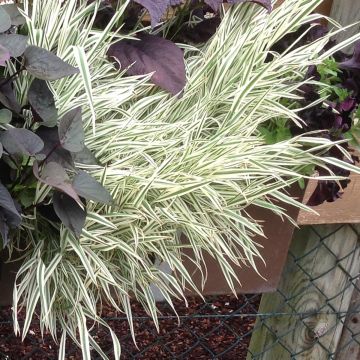
Comments